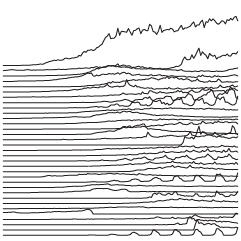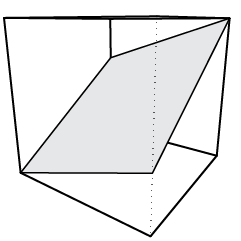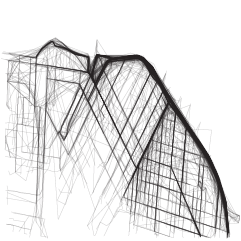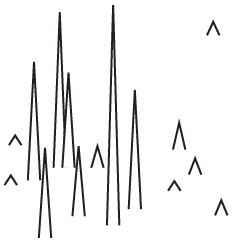Dorothy Gambrell of very small array charts median Tomatometer ratings of the top 10 grossing films, since 1950. From the graph it looks like movies are getting worse, but are they really? This goes back to a similar argument from a couple of months ago. The decline is probably more of an indicator of reviewers, viewers, movie types, and ease of watching than it is of a drop in quality.
-
DisplayCabinet is a clever use of a projected display and RFID tags to take data away from the computer screen an into the physical world.
Read More -
Business intelligence expert Stephen Few goes on another rant about information graphics — mainly about the work of David McCandless, designer of The Visual Miscellaneum. Few’s post is in response to another from Teradata marketing director Mario Bonardo, praising innovation and new ideas, etc for business intelligence.
Read More -
Don’t you just hate it when you’re pleasantly driving around in the city and you’re suddenly enveloped by a giant pie chart in the road? Such a downer.
Read More -
Designer Patrick Smith has a minimalist look at mental disorders:
I was doing some research about mental health and I came across a list of mental disorders. I chose a few, starting with OCD, and set myself the challenge of defining each in a minimal style.
The OCD graphic is definitely the best one of the bunch. Others include agoraphobia, anorexia nervosa, and depression.
[Adapt & Graphic Patrick]
-
We’ve seen sorting algorithms visualized and auralized, but now it’s time to see them through the spirit of Hungarian folk dance. In a series of four videos (so far), folks at Sapientia University in Romania demonstrate how different sorting algorithms work with numbered people dancing around and arranging themselves from least to greatest.
See them in action in the video below. This one is for Bubble-sort. They move with such zest.
Read More -
Lovely imagery showing sugar consumption for day through lifetime. The average American consumes 45.3 pounds of sugar in a year. It’s a part of a read-later NYT article on the toxicity of sugar. Check out the similar pic for high fructose corn syrup. [via]
-
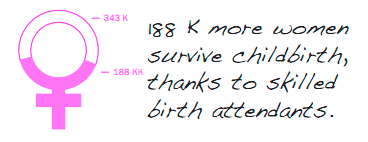 During production of the 2011 USAID annual letter from Rajiv Shah, someone said to someone else, “We need to make this more visually appealing. Let’s add some charts.” The problem was that there wasn’t much data to look at or report, and no one knew how to dig deeper. Plus — they had to sexify the letter in a hurry, so they settled for what’s there now.
During production of the 2011 USAID annual letter from Rajiv Shah, someone said to someone else, “We need to make this more visually appealing. Let’s add some charts.” The problem was that there wasn’t much data to look at or report, and no one knew how to dig deeper. Plus — they had to sexify the letter in a hurry, so they settled for what’s there now.Your mission, if you choose to accept it, is to find the mistakes and to make suggestions on how to improve on what’s there. Some figures clearly have a few oddities while others simply could’ve been improved with better design choices. Here’s the letter and the same as a PDF. Can you figure out what’s going on? Leave your findings in the comments. Godspeed.
-
You’ve seen population changes at the state and county level, but with Census data, you can zoom in all the way to the block level. Stephen Von Worley breaks it down.
Read More -
Over the past four years there was a 43 percent increase in prescriptions for antidepressants. Some news outlets attribute this rise to the recession. People more depressed equals more drugs. Ben Goldacre of Bad Science explains why said outlets need to be more careful with their analyses.
From what I can tell, all the reports took an aggregate (the 43 percent) and then made a big assumption to explain it. I’m all for data journalism, but statistics is rarely that straightforward.
-
The MIT SENSEable City Lab presents five different perspectives of the ebb and flow in Singapore at the Singapore Art Museum.
Read More -
It’s xkcd on statistical significance. I need to stop eating all those green jelly beans.
I hear there’s also a link between sunshine and lollipops.
-
John Martz, in collaboration with Koyama Press, pixelates 235 Star Trek characters in this limited edition print. This amuses me even though I’ve never been a Star Trek fan. Must be those episodes of Next Generation I watched after school because there was nothing else on. Always had a soft spot for that Data fellow.
[Trexels via Boing Boing]
-
Natasha Singer for The New York Times starts the article on visualization and design with: “In an uncharted world of boundless data, information designers are our new navigators.” Uh oh, I thought, another aesthetic-heavy piece on hot numbers. But then Singer continues:
They are computer scientists, statisticians, graphic designers, producers and cartographers who map entire oceans of data and turn them into innovative visual displays, like rich graphs and charts, that help both companies and consumers cut through the clutter. These gurus of visual analytics are making interactive data synonymous with attractive data.
I can get on board with that. Includes soundbites from Rosling, Shneiderman, and Rodenbeck.
-
Early retirement. That’s what most people want, unless you’re lucky enough to love…
-
Almost a year ago, the BBC aired the Beauty of Maps, but we Americans couldn’t watch it online. Well, now you can. The full documentary is available for your viewing pleasure on YouTube. The hour and a half film is broken up into 12 parts. They’ve actually been online since August of last year, but for some reason I’m just now hearing about it. Enjoy part one below.
Read More -
I feel like whenever I watch a British film, I see a Harry Potter wizard or witch in it. I guess I’m not imagining things. The Ragbag had a similar curiosity and graphed all the films with four or more wizards in it — all 24 of them.
Read More -
In a guest post for the guardian.co.uk Datablog, I thought out loud about the possible end of Data.gov and what it means for open government data. Let me know what you think.
Update: Funding might not be cut completely (for now).
-
As an entry to the Eyebeam DataVizChallenge to visualize your taxes, Budget Climb by Frankie Cheung, Zach Schwartz, and Fred Truman places you in a virtual environment where you can climb and stand on top of tax data.
Created using openframeworks, the Microsoft Kinect and OpenNI Budget Climb is a physically interactive data environment where we can explore 26 years of federal spending – giving us a unique perspective on how our government spends our money. In order to explore the data we must exert physical effort, revealing how the budget is distributed in a novel and tangible way.
Maybe not the best way to learn about the data, but I like the idea of data exploration as a game. See it in action below. It reminds me of Irad Lee’s Spamology.
Read More -
Designers’ current obsession with cocktails and proportions continues with Konstantin Datz’ recent poster. Engineer’s guide to drinks is still the best. Although this one gets plus points for hints of realism.
Read More

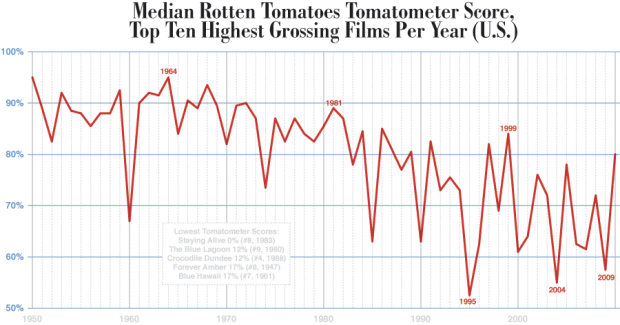

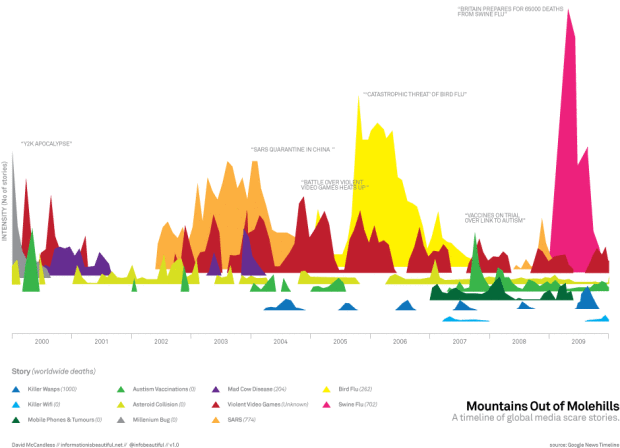

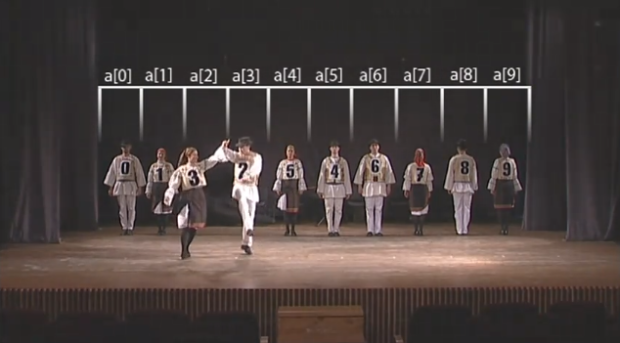
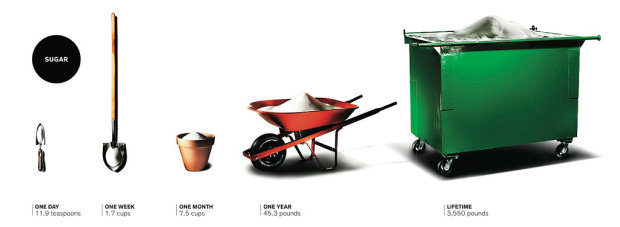

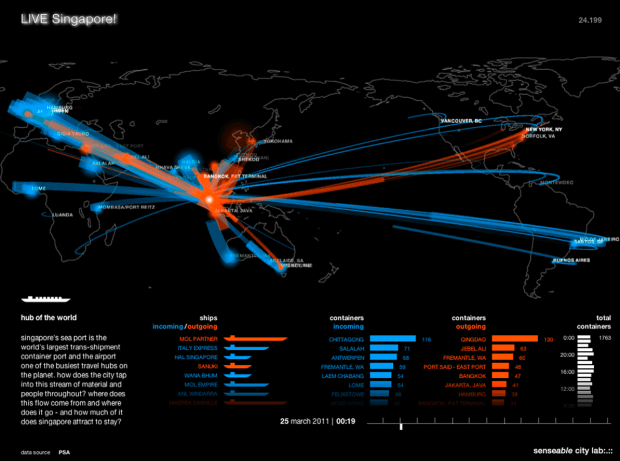

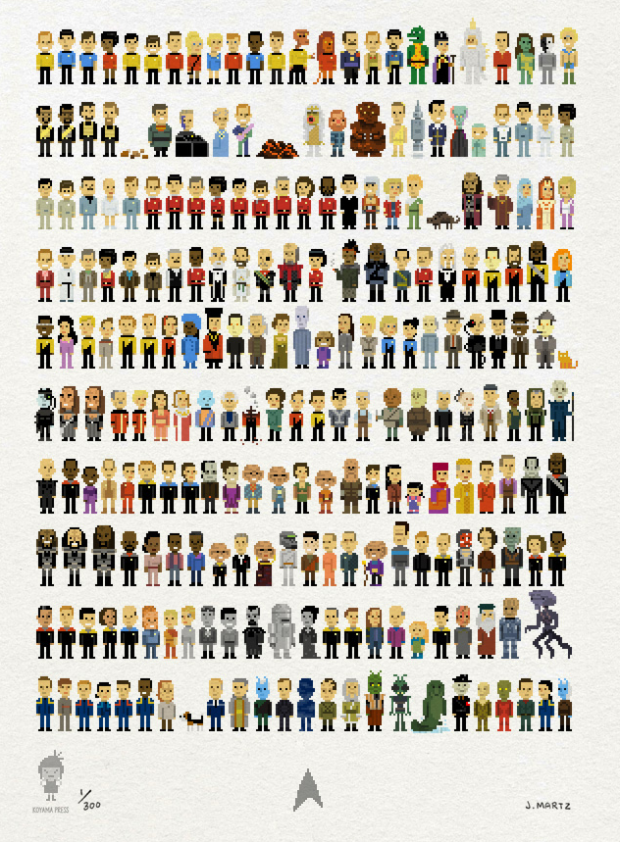
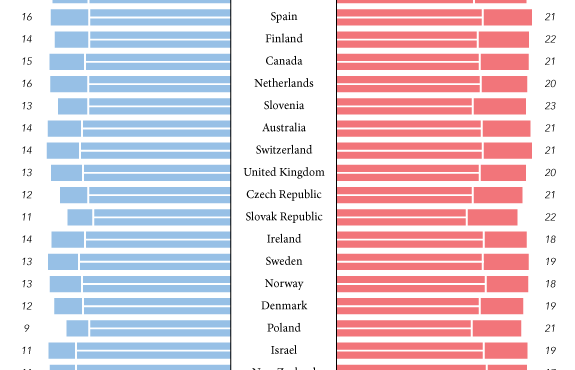
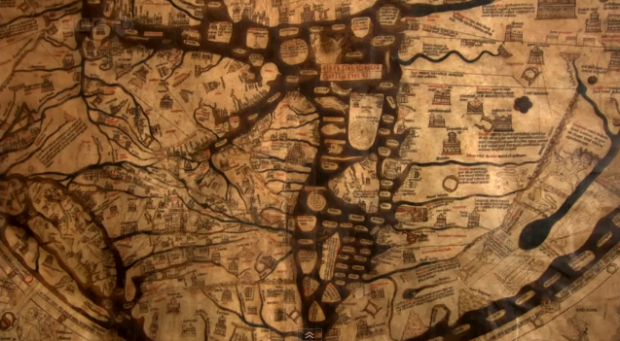
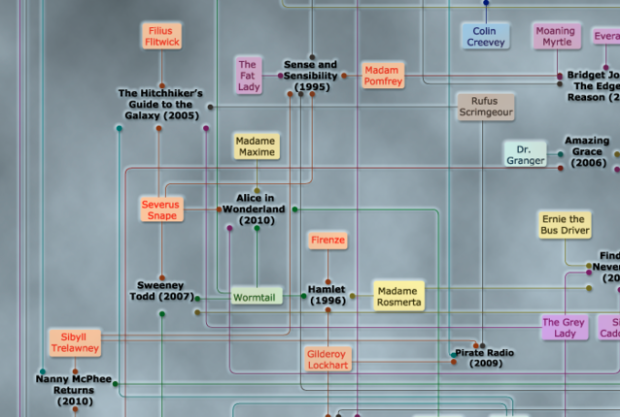
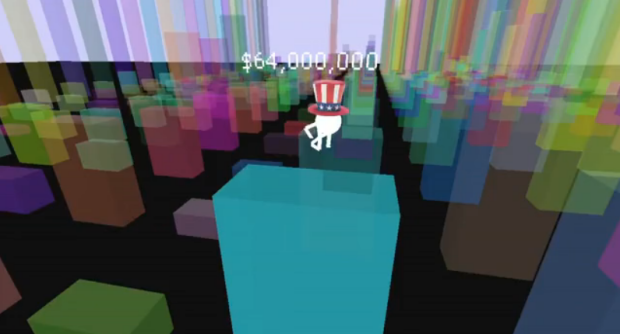
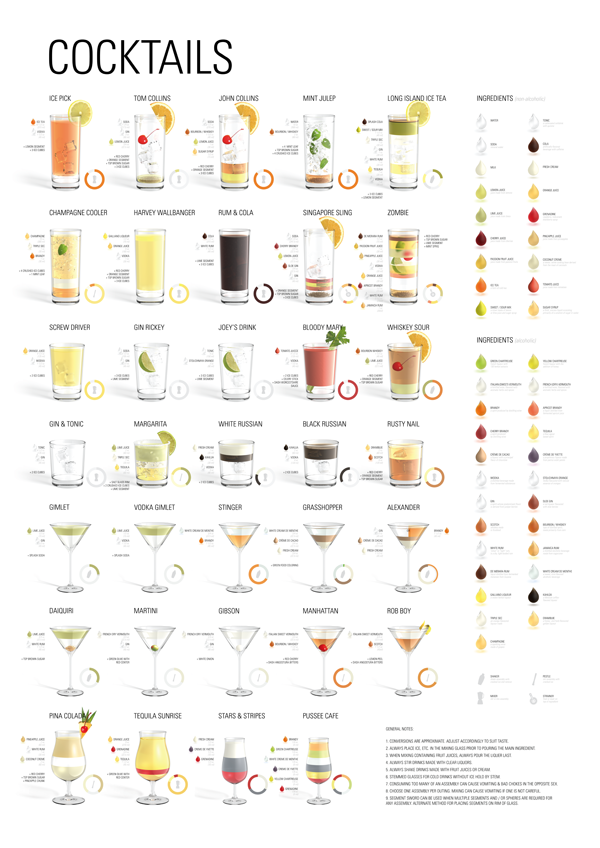
 Visualize This: The FlowingData Guide to Design, Visualization, and Statistics (2nd Edition)
Visualize This: The FlowingData Guide to Design, Visualization, and Statistics (2nd Edition)

